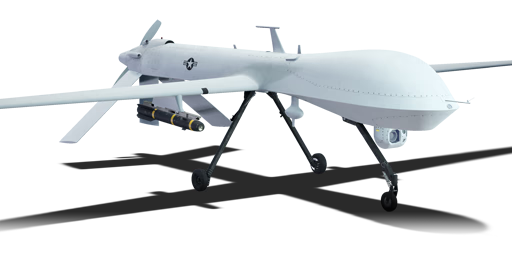


In the mid-1990s, General Atomics Aeronautical Systems was awarded a contract to build a new UCAV (Unmanned Combat Aerial Vehicle) for the US military, designated "RQ-1". Developed from the General Atomics Gnat 750, the "Predator", as the RQ-1 was named, would go on to serve in many conflicts around the world, including in Bosnia, Yugoslavia, Afghanistan, Iraq, and Libya, starting in 1995. It filled the role of remote reconnaissance and surveillance. After the drone was successfully tested carrying Hellfire missiles in 2001, the RQ-1 would also participate in the strike role, thereafter being redesignated as the "MQ-1". The RQ/MQ-1 Predator served extensively with the US military from 1995 until 2018, after which it was pulled out of service and replaced by the larger and more capable General Atomics MQ-9 "Reaper".
Introduced in Update "Drone Age", the MQ-1 is not researchable and is only accessible for players in high-tier ground battles, costing 750 Spawn Points to spawn. All in-game nations have access to this drone, except for the USSR and China, who instead use the Orion and Wing Loong I respectively. The MQ-1 is useful in cases where other CAS is unavailable or unable to be used, for example, in night ground battles where players can take advantage of the MQ-1's thermal imaging. Due to its relatively limited arsenal and low top speed, players are recommended to use the MQ-1 conservatively and as far away from the battlefield as possible to stay clear of enemy SPAA. After the drone's armament is expended, it can be used to locate enemy vehicles for the team with its excellent optical zoom and thermals.
flaps
flaps
flaps
brake